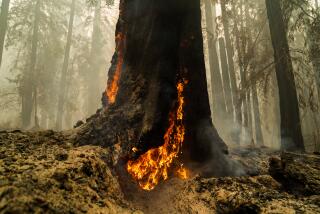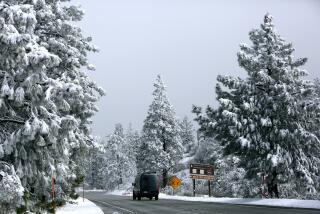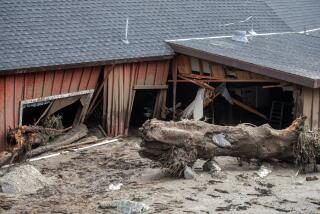Vineyard owners share stories of loss and salvation amid wine country wildfires
“I just really wish we knew our fate,” wrote Carole Meredith in a recent Facebook post as she waited out her evacuation from her winery and home on Mt. Veeder.
Meredith, of Lagier Meredith vineyard in the Napa Valley, is one of the many affected by the multiple wildfires burning in Northern California. For most, the mantra has been watch and wait, looking anxiously at ridgelines, at puffs and plumes in the distance, hoping not to hear the loudspeaker announcing evacuation, hoping that the winds would shift or die. When you ask people how they’re doing, it’s harder for them to answer. The adrenaline rush of fear has passed for the most part, and given way to other, more tentative emotions.
“I really hate the not knowing,” wrote Meredith.
Those still in their homes scan news sources—TV, internet, news outlets, Twitter, Cal Fire reports, caltopo.com, but the fire has been moving too fast and too unpredictably for these sources to have much currency. “It’s been impossible to get any information,” says Kimberly Jones, a Napa wine broker. “There were no press conferences, no TV reports; the lack of information was astounding. You had to get into your car and drive down the road to the cops and ask them what’s going on, and half the time they didn’t know.”
The valleys were crawling with reporters, but three in particular—Esther Mobley of the San Francisco Chronicle, Sarah Stierch of Sonoma Magazine, and freelancer Elaine Chukan Brown—knew the valley best and knew where the gaps and misinformation were most egregious. Each became vital social media lifelines, traveling dangerous roads to remote vineyards, wineries and neighborhoods that were reportedly under threat or altogether destroyed and returning with eyewitness accounts, and perhaps more importantly, dousing rumors just as readily as fire crews doused fires.
Stories abound of houses and structures spared on one site while others a stone’s throw away were lost, succumbing to flukes of wind pattern and land contours, not to mention land use. At the front lines of the Atlas fire, Susie and Tom Jenks own property that includes part of the world-famous Stags Leap palisades, a stark volcanic formation that’s as iconic as any geographical site in the valley. The property, and the house Susie Jenks’ family has lived in since 1967, was spared, while houses all around them burned. The reason? “We have cattle,” says Jenks. “Our cows ate the grass on our hillsides, and when the fire reached that point it just stopped, it had run out of fuel.”
Down-valley in Coombsville, Tom Farella of Farella Winery kept vigilant through the night for sparks and flareups, stamping out tiny conflagrations before they were able to grow. He conveyed this stratagem to Jill and Steve Matthiasson on the other side of the valley, who with their kids stayed up all night doing exactly the same thing in front of their newly completed winery, Matthiasson Wines, as coyotes encroached in the gloom beyond their floodlights, howling with every passing siren.
Malia van der Kamp and her family used a similar strategy on their Sonoma Mountain ranch. Their site, planted to about 25 acres of vines but also home to horses, sheep, cows, chickens and goats, has been in continuous agricultural operation for more than 100 years. Despite being given evacuation orders, they returned less than 12 hours later to defend their land from the onslaught. Once assembled, they filled fermenting bins with water, loaded the bins onto pickup trucks and then started driving around the ranch, dousing hot spots and tossing dirt on the embers.
“It was like playing a huge game of ‘whack-a-mole,’” said Van der Kamp. “You’d put out one and two more would start up.” And sometimes dead spots came back from the dead. “You think a fire’s out,” she says, “but then it comes back. A house across the street from us burned, and the fire crews saved it. But an hour later we saw 20-foot flames. A breath of wind and it all sparks up again.”
The most effective barrier to the progress of the fire, outside of fire crews, has been the vines themselves, which are full of moisture and resistant to the flames. Steve Matthiasson, who has been managing vineyards in the Napa Valley for 30 years and has seen his share of lightning strikes, brush fires, tree fires, barn fires and the like, marvels at their resilience. “I’ve never ever seen a vineyard get wiped out by fire,” he says. “If you have a ton of heat right next to the vines, you might get a few rows in that will die, but even then, they’re killed from the heat; they don’t really burn.”
In some instances, though, like at Sky Vineyards on Mt. Veeder, the vineyards that surrounded the winery weren’t positioned to save anything else. This is a property established in the ’70s by Lore Olds (managed now by Olds and his daughters, Mayacamas and Skyla), home to rustic mountain Zinfandels, housed in a solar-powered winery with a solar-powered, off-the-grid house nearby. The winery, surrounded by rows of scorched vines, is intact. The house is completely gone. This is where thousands of harvest lunches and dinners were prepared and consumed, and where every Fourth of July one of the greatest parties in Northern California took place. From the ridge just above the property line, you could walk up to the crest after dusk and see fireworks from all of Marin County, then scan across the Golden Gate see all of the celebrations in San Francisco, then scan across the Bay to Oakland and Berkeley and Vallejo and Richmond and Sonoma. That home, a place from which it seemed you could bear witness to all of Northern California’s incomparable glory on a warm night in July, is now burned to the ground. And stories of loss like this, in one form or another, will be told thousands of times from this week forward.
ALSO:
How one Northern California winemaker is coping with the catastrophic wildfires
They survived six hours in a pool as a wildfire burned their neighborhood to the ground
More to Read
Eat your way across L.A.
Get our weekly Tasting Notes newsletter for reviews, news and more.
You may occasionally receive promotional content from the Los Angeles Times.






